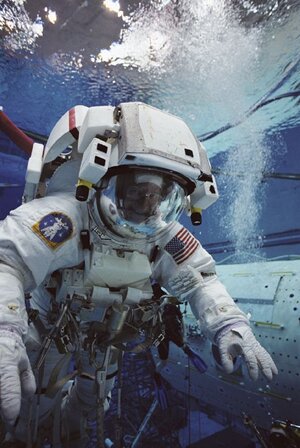EURECA-1, Tethered Satellite System
MISSION STATISTICS
Mission name: STS-46
Shuttle: Atlantis
Number of crew members: 7
Launch:
31 July 1992, 09:56:48 a.m. EDT
Landing:
8 August 1992, 09:11:50 a.m. EDT, Runway 33, Kennedy Space Centre
Duration: 7 days, 23 hours, 15 minutes, 3 seconds
Number of orbits: 127
CREW
- Loren J. Shriver (3), Commander
- Andrew M. Allen (1), Pilot
- Jeffrey A. Hoffman (3), Mission Specialist 1
- Franklin R. Chang-Diaz (3), Mission Specialist 2
- Claude Nicollier (1), Mission Specialist 3 - ESA Switzerland
- Marsha S. Ivins (2), Mission Specialist 4
- Franco Malerba (1), Payload Specialist 1 - Italy
(1) number of spaceflights each crew member has completed, including this mission

MISSION HIGHLIGHTS
Mission's primary objectives were the deployment of ESA's European Retrievable Carrier (EURECA) and the joint NASA/Italian Space Agency Tethered Satellite System (TSS).
EURECA was deployed a day later than scheduled because of a problem with its data handling system. Seven and a half hours after deployment, the spacecraft's thrusters were fired to boost EURECA to its planned operating altitude of around 310 miles. However, thruster firing was cut to six minutes from 24 minutes because of unexpected attitude data from the spacecraft. The problem was resolved and EURECA was successfully boosted to its operational orbit on the mission's sixth day.
TSS deployment also was delayed one day because of the problems with EURECA. During deployement, the satellite reached a maximum distance of only 860 feet from the orbiter instead of the planned 12.5 miles because of a jammed tether line. After numerous attempts over several days to free the tether, TSS operations were curtailed and the satellite was stowed for return to Earth.
Secondary payloads included: Evaluation of Oxygen Integration with Materials/Thermal Management Processes (EOIM-III/TEMP 2A), Consortium for Materials Development in Space Complex Autonomous Payload (CONCAP II and CONCAP III), IMAX Cargo Bay Camera (ICBC), Limited Duration Space Environment Candidate Materials Exposure (LDCE), Air Force Maui Optical Site (AMOS), Pituitary Growth Hormone Cell Function (PHCF), and Ultraviolet Plume Instrument (UVPI).
Mission extended extra day to complete scientific objectives.





